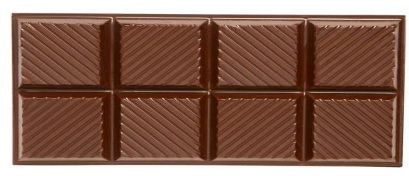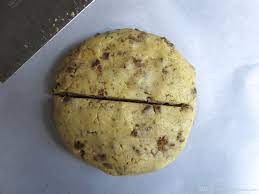Summary
In this lesson, you will begin by reading the book "The Duckling Gets a Cookie" by Mo Willems to get students thinking about sharing equally and what a fair share means. Students will use shapes and objects to represent items as they work with a variety of problems. Although the problems presented for the shapes and items might be the same, for some students changing the shapes and objects seems to change the situation and introduces a new challenge. Students will progress from concrete work with manipulatives to understanding the vocabulary of fractions and sharing, creating their own fair share problems.
Essential Question(s)
What is a fair share? What is a whole? What is one-half? What is one-fourth?
Snapshot
Engage
The lesson begins with a fun reading of The Duckling Gets a Cookie by Mo Willems. Next, students are asked to consider a cookie as one whole. They are posed the problem of creating a "fair share."
Explore
Students move counters to make fair shares on sorting mats as you read a variety of problems to the children. You begin a fair share anchor chart.
Explain, Part 1
Students practice making fair shares with a card sort. After working with the card sort, students listen and interact with the book Give Me Half by Stuart J. Murphy. The class then creates a T-chart of items that are “equally split” on one side and “unequal” on the other.
Explain, Part 2
During this second reading of the book Give Me Half, the initial Fair Share anchor chart is used to add the mathematical notation and words for sharing halves.
Extend
Students practice making fair shares. Play-dough, counters, and other items are available to help them make fair shares.
Evaluate
Students add to a Mini Booklet about Pigeon and Duckling to show their understanding of fair shares.
Materials
The Duckling Gets a Cookie by Mo Willems
Give Me Half by Stuart J. Murphy
Is this a Fair Share Card Sort (attached; 1 per pair of students)
Sorting Mats (attached)
Counters (10-20 per student)
Cookies (real or printed; printable items are attached)
Pizza (real or printed; printable items are attached)
Chocolate bars with partitions (real or printed; printable items are attached)
Brownies (real or printed; optional)
Play-dough
Bear Counters (3 per student)
Mini Booklet (attached)
Recording sheet (optional)
Engage
20 Minute(s)
Begin the lesson by reading The Duckling Gets a Cookie by Mo Willems.
Next, show students a cookie. It can be an actual cookie or the one from the Cookie Printable. Explain that this cookie is one whole.
Then, talk aloud using the questions below as you create a fair share.
How can we make a whole cookie into halves? (Cut the cookie into halves)
How many halves do we have? Is this a fair share?
How can we divide it into fourths? (Cut the cookie into fourths)
How many fourths do we have? Could this be a fair share?
Explore
20 Minute(s)
You can use the attached Fair Share Sorting Mats or have students make groups on their desks. Depending on grade level, give each student 10-20 counters. Students should move the counters to make a fair share as you read the following word problems:
Ethan has 10 candies to share with his friend Mike. How many will both Ethan and Mike get if the candies are fair-shared?
Your dog has to share 14 dog treats with the neighbor dog. How many dog treats does each dog get if they are fair-shared?
Three friends were sharing six tootsie rolls. How many will each friend get once they are fair-shared?
Luke, Abbie, and Ty had 12 hot dogs to share. How many will each get once they are fair-shared?
The pigeon, duckling, and Mo have to share 15 cookies evenly. How many will each get once they are fair-shared?
Gemma wants to share three pizzas equally with her brother. How should she do this to have a fair share?
Continue with more problems if your students need more practice. Consider using students’ names and things they enjoy in problems in order to keep them engaged.
Start an Anchor Chart by writing fair share on your chart. Next, have the class share their meanings for the term fair share. Students can also suggest pictures to illustrate the meaning.
Explain
20 Minute(s)
Part 1
Tell the students that they will perform a Card Sort. Distribute the attached Is This a Fair Share Card Sort for this activity. Students will work in pairs to sort the cards into one of three groups, those being: “Yes, this is a fair share,” “No, it is not a fair share,” or “I’m not sure.”
Observe the groups while they are sorting. Ask questions and listen to the reasoning for how students sorted the cards.
Next, read the book Give Me Half by Stuart J. Murphy. During this first reading, discuss how the brother and sister figure out how to share things fairly by splitting them in half. Make a T-Chart with one column labeled “Equally Split” and the other “Unequally Split.” Using the attached Shapes Printable and Food Printable, or using real food in place of printed food, show students the shapes and items and have them help you decide if they are divided equally or unequally. Attach them to the chart in the respective column.
Part 2
Read the book Give Me Half a second time. As you read through the book again, stop to add math notation and words for ½ and ½ is 1 to the fair share anchor chart. Be sure to include ½ + ½ = 1 whole and consider adding a picture to illustrate, using the book as a guide.
Return to the card sort and have students sort them again. This time you might ask them to find examples that show ½ and ½ is 1. You could also add them to the Equally and Unequally Split T-Chart.
Extend
20 Minute(s)
Give students some play-dough and have them make three cookies. Next, give each student three counting bears. Have students consider how to make fair shares with differing amounts of cookies and bears in mind. For example, have students
Make three play dough cookies and divide them equally between two bears.
Make five cookies and divide them between the two bears.
Make four cookies and share them with three bears.
Feel free to make as many variations of this exercise as you would like, adding cookies and/or bears.
Ask students to demonstrate their understanding of the essential questions (What is a whole? What is a fair share? What is one-half? What is one-fourth?) with their play-dough and explain their thinking as you visit each group or table.
Next, give each pair of students a chocolate bar. This can be a real or printed chocolate bar from the attached Chocolate Bar Printable.

Have students work together to determine a fair share if sharing between two people. Ask students how they can prove it. Can you have a fair share with four people? Have a pair of students show how they divided the chocolate bar into half and then one-fourth to create a fair share.
Next, give students two more chocolate bar pictures. Ask them how they would share these three chocolate bars between two people. What about between four people? Have students share out their answers and reasoning to the class.
Evaluate
15 Minute(s)
There are two options for the evaluate step, as follows:
a. Use the attached Mini Booklet, which contains four scenarios about Pigeon and Duckling making fair shares, as a way of evaluating student understanding.
b. Give students several scenarios to solve to create fair shares, recording their answers on a recording sheet by drawing pictures or writing to show how they got their answers.
For example:
How do we create a fair share if I have six brownies and four children?
How do we create a fair share if I have 10 grapes and five students?
Options for Advanced and Gifted Learners
These activities can be used in place of or in addition to the activities in the regular lesson. Students might:
Use a larger quantity of items to divide for fair sharing.
Share items where the shares are only equal if they cut an item into fractional parts such as thirds, fourths, or sixths.
Make a poster board or video explaining the process of fair sharing.
They could do this project using Canva, Legos, pretzels, crayons, printable items, or more.
Create their own Pigeon and Duckling book that shows the sharing of different amounts of cookies. Students can use Book Creator.
Examples:
Duckling cut his cookie into _______ equal parts and shares it with ____________ Pigeon (or pigeons)!
Twelve pigeons showed up at the party, and there were 6 cookies. So how did Duckling share the cookies?
Resources
Awilkerson. (2021). Give Me Half! by Stuart J. Murphy [Video]. Schooltube. https://www.schooltube.com/media/Give+Me+Half%21+by+Stuart+J.+Murphy/1_ccdflz09
K20 Center. (n.d.). Anchor Charts. Strategies. https://learn.k20center.ou.edu/strategy/58
K20 Center. (n.d.). Book Creator. Tech Tools. https://learn.k20center.ou.edu/tech-tool/610
K20 Center. (n.d.). Canva. Tech Tools. https://learn.k20center.ou.edu/tech-tool/612
K20 Center. (n.d.). Card sort. Strategies. https://learn.k20center.ou.edu/strategy/147
K20 Center. (n.d.). T-Chart. Strategies. https://learn.k20center.ou.edu/strategy/86
Murphy, S. J. (1996). Give Me Half!. HarperCollins.
Willems, M. (2012). The Duckling Gets a Cookie. Hyperion Books for Children.


